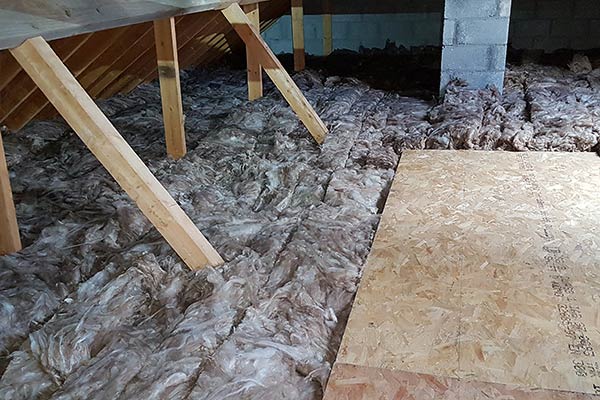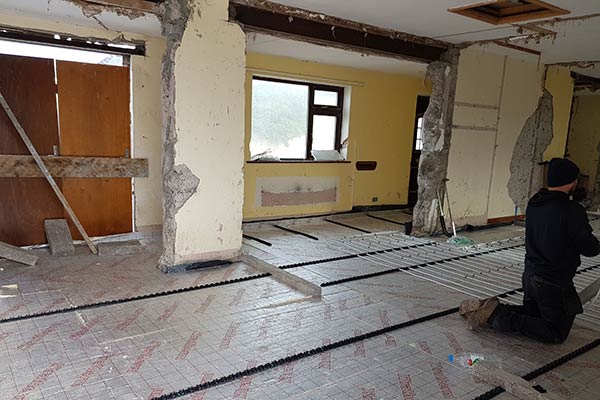Wall Insulation
Cavity Wall Insulation - Cavity walls are injected from the outside with insulation.
Cavity walls are built with an inner and outer wall with a cavity in between. Designed for keeping rain and moisture out they offer very little in the way of thermal insulation. Adding cavity wall insulation will increase the comfort levels and energy efficiency of your home.
What you should expect during the works?
- Holes will have to be drilled in the outside wall to pump in the insulation. After the insulation work is completed, your contractor will fill these holes. Painting of these filled holes is the responsibility of the homeowner.
- The time needed to install the insulation varies depending on the size of the walls, but the work is usually completed in a single day.
External Wall Insulation - Insulating materials are fixed to the outer surface of external walls.
External wall insulation is recommended for your home when there is insufficient insulation, and insulating externally is the most suitable treatment for your walls.
What does the installation involve?
External wall insulation involves wrapping a layer of insulation around your home, fixing it to the walls, embedding mesh in it to provide strength, and covering it in a render to provide weather resistance.
Additional ventilation may be required when your walls are insulated. Kingdom will assess the best method and discuss this with you before the work begins. For further information on the importance of ventilation and the wall ventilation requirements for your home, see the Ventilation section.
What you should expect during the works?
- Some works such as removal of ivy and cutting back of shrubs/trees are the responsibility of the homeowner.
- To install external wall insulation, scaffolding may need to be erected outside your home, and may be in place for several weeks.
- There will be little or no disruption to the inside of your home when installing external wall insulation (unless other measures are being installed or if material for the back of the house needs to be brought through the house).
- If your electricity or gas meter box is on the outside wall or there are electrical cables attached to the wall, these will have to be moved. ESB Networks or Gas Networks Ireland have to carry out this work before the insulation can begin. This can delay the work by a number of weeks.
- If you have a garage, or similar uninhabited structure, attached to your home, this will not be externally insulated. However, the wall between the house and the garage may be insulated if possible.
Internal Wall Insulation - Insulation boards are fixed to the inside of external walls.
Internal wall insulation his recommended for your home if it has solid/cavity block walls, and insulating externally is either not possible or is not considered the best solution.
What does the installation involve?
Internal insulation (sometimes referred to as ‘drylining’) usually involves fixing insulated plasterboards to the inside of the external walls. A skim or tape and joint finish will be applied and a coat of primer paint.
Additional ventilation may be needed when your walls are insulated. Kingdom will assess the best method and discuss this with you before the work begins. For further information in the importance of ventilation and the wall ventilation requirements for your home, see the Ventilation section.
What you should expect during the works?
- There will be a lot of disruption and dust during installation of internal wall insulation. The level of disruption should be fully explained to you before any work begins.
- Depending on the scale of work, several people may be in your house throughout the day for the duration of the works. To insulate a whole home internally may take up to a week.
- Since boards are being applied to the inner side of the walls, there will be some loss of space in your home’s rooms (approximately 100mm/ 4”).
- Sometimes, additional work is needed to make the walls suitable for internal wall insulation. For example, the contractor may have to remove plaster from the walls to apply the new insulation. This will be determined during the survey.
- All fixtures and fittings (e.g. Radiators, skirting boards, curtain poles, etc) will need to be removed before the insulation can be installed.
- The amount of visible window frame will be reduced on the inside as it is important to insulate the walls surrounding the window (‘windows reveals’).
- The finished walls will be painted with one coat of white primer.









